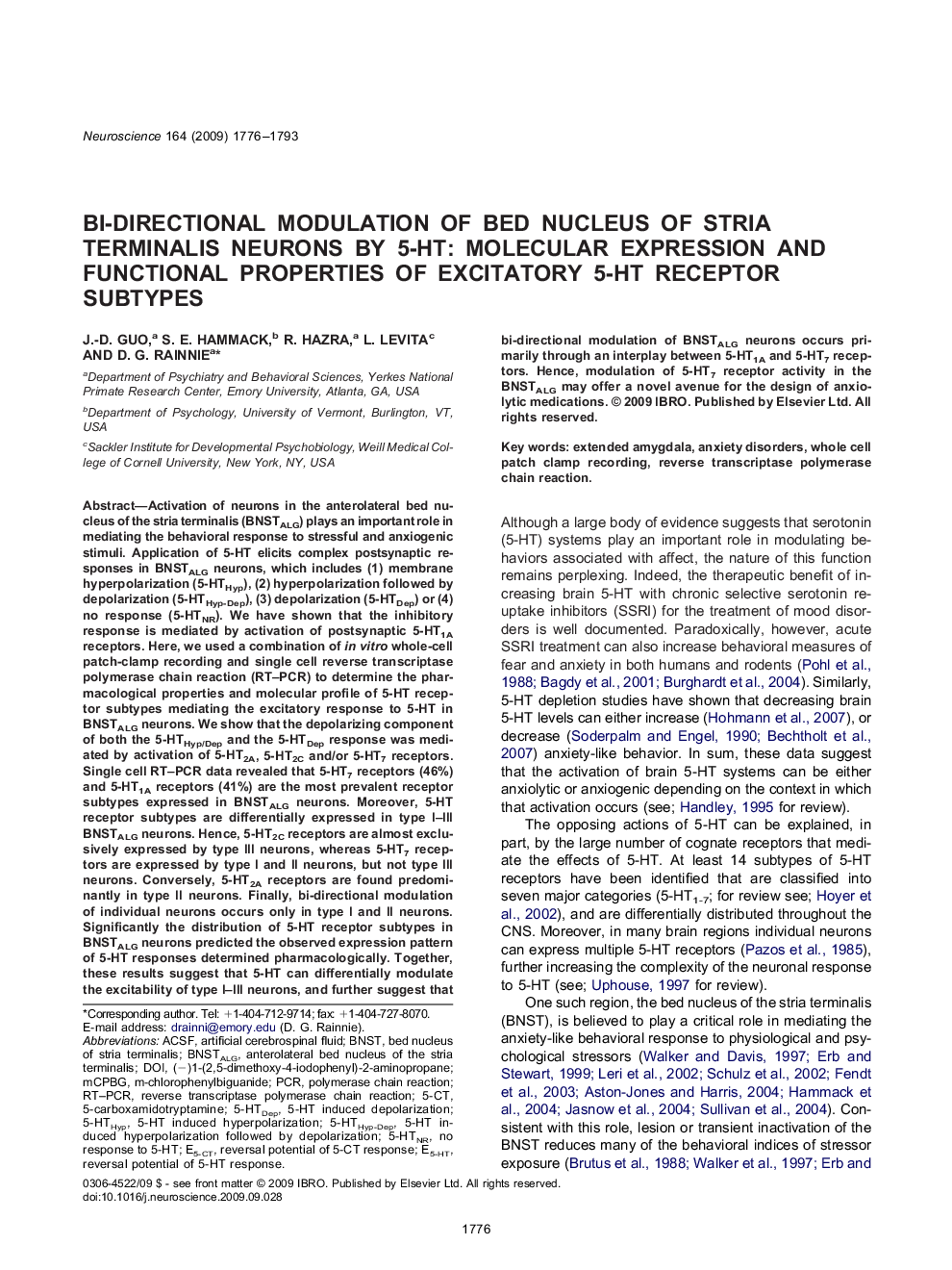| Article ID | Journal | Published Year | Pages | File Type |
|---|---|---|---|---|
| 6277962 | Neuroscience | 2009 | 18 Pages |
Abstract
Activation of neurons in the anterolateral bed nucleus of the stria terminalis (BNSTALG) plays an important role in mediating the behavioral response to stressful and anxiogenic stimuli. Application of 5-HT elicits complex postsynaptic responses in BNSTALG neurons, which includes (1) membrane hyperpolarization (5-HTHyp), (2) hyperpolarization followed by depolarization (5-HTHyp-Dep), (3) depolarization (5-HTDep) or (4) no response (5-HTNR). We have shown that the inhibitory response is mediated by activation of postsynaptic 5-HT1A receptors. Here, we used a combination of in vitro whole-cell patch-clamp recording and single cell reverse transcriptase polymerase chain reaction (RT-PCR) to determine the pharmacological properties and molecular profile of 5-HT receptor subtypes mediating the excitatory response to 5-HT in BNSTALG neurons. We show that the depolarizing component of both the 5-HTHyp/Dep and the 5-HTDep response was mediated by activation of 5-HT2A, 5-HT2C and/or 5-HT7 receptors. Single cell RT-PCR data revealed that 5-HT7 receptors (46%) and 5-HT1A receptors (41%) are the most prevalent receptor subtypes expressed in BNSTALG neurons. Moreover, 5-HT receptor subtypes are differentially expressed in type I-III BNSTALG neurons. Hence, 5-HT2C receptors are almost exclusively expressed by type III neurons, whereas 5-HT7 receptors are expressed by type I and II neurons, but not type III neurons. Conversely, 5-HT2A receptors are found predominantly in type II neurons. Finally, bi-directional modulation of individual neurons occurs only in type I and II neurons. Significantly the distribution of 5-HT receptor subtypes in BNSTALG neurons predicted the observed expression pattern of 5-HT responses determined pharmacologically. Together, these results suggest that 5-HT can differentially modulate the excitability of type I-III neurons, and further suggest that bi-directional modulation of BNSTALG neurons occurs primarily through an interplay between 5-HT1A and 5-HT7 receptors. Hence, modulation of 5-HT7 receptor activity in the BNSTALG may offer a novel avenue for the design of anxiolytic medications.
Keywords
Related Topics
Life Sciences
Neuroscience
Neuroscience (General)
Authors
J.-D. Guo, S.E. Hammack, R. Hazra, L. Levita, D.G. Rainnie,
